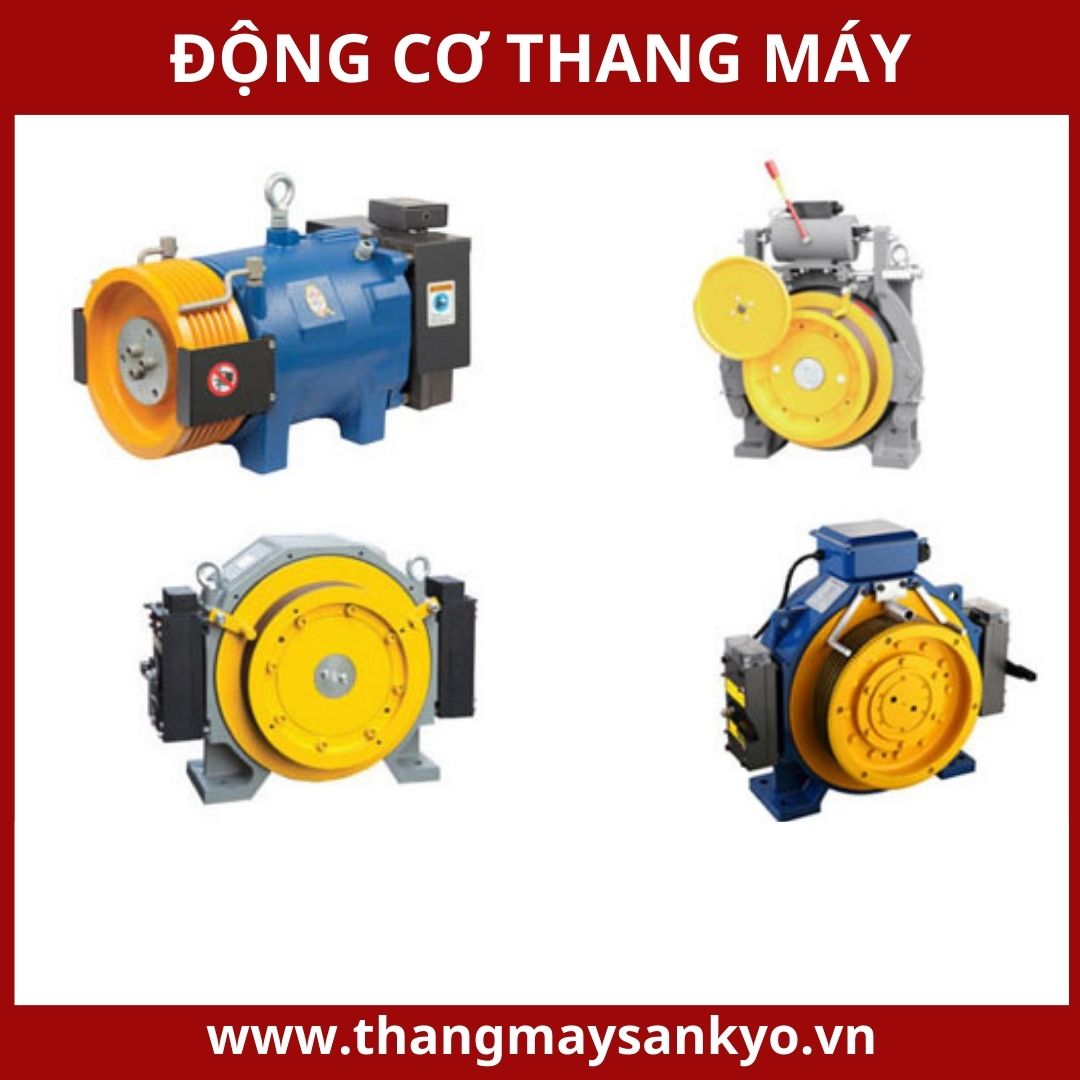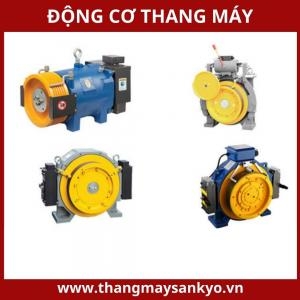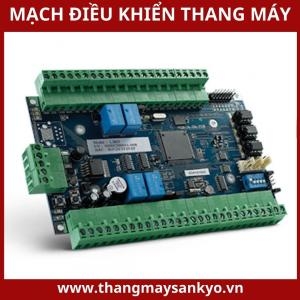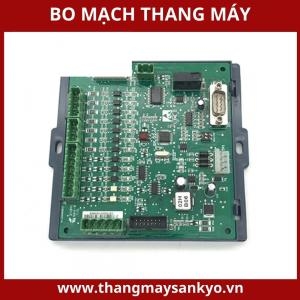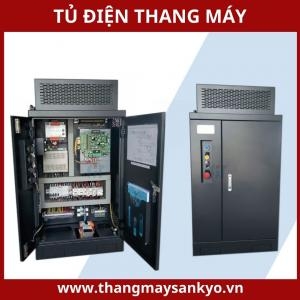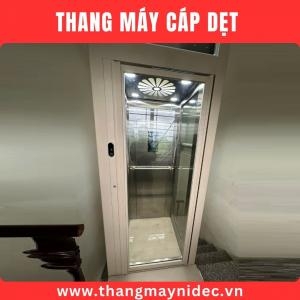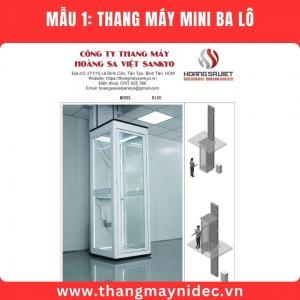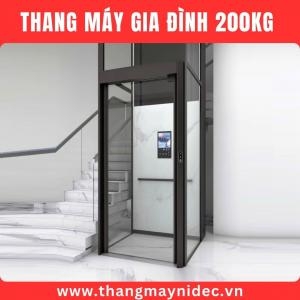The system is processing. Please wait a moment!
- Home Products ELEVATOR ACCESSORIES Elevator Control Cabinet
Elevator Motor
What role does the elevator motor play?
The elevator motor plays an essential role in the elevator drive system, performing the task of providing the necessary force for the gearbox to reach a certain operating speed. When the motor operates, it creates a rotary motion, causing the main pulley to rotate. This pulley connects to the load cables, and the rotary motion from the motor is transmitted through the pulley to the cable, pulling the cabin up or down in the elevator shaft.
In the elevator system, the motor plays a central role, connecting the cabin and the counterweight through a complex system including friction pulleys mounted directly on the motor and other directional pulleys. The friction pulley system has the important task of transmitting rotational motion from the motor to the cable effectively, helping the cabin and counterweight move up and down stably and smoothly.
When the engine is running, the friction pulley system on the motor starts rotating, and kinetic energy is transmitted to the cable. The cable pulls the cabin and counterweight, allowing them to move up and down in the elevator shaft. The pulley system is designed to reduce friction and optimize transmission efficiency, helping to reduce noise and vibration during operation. This not only helps the elevator operate smoothly, but also enhances the comfort and safety of the user. At the same time, the correct design and maintenance of the pulley system also contributes to improving the durability and overall performance of the elevator.
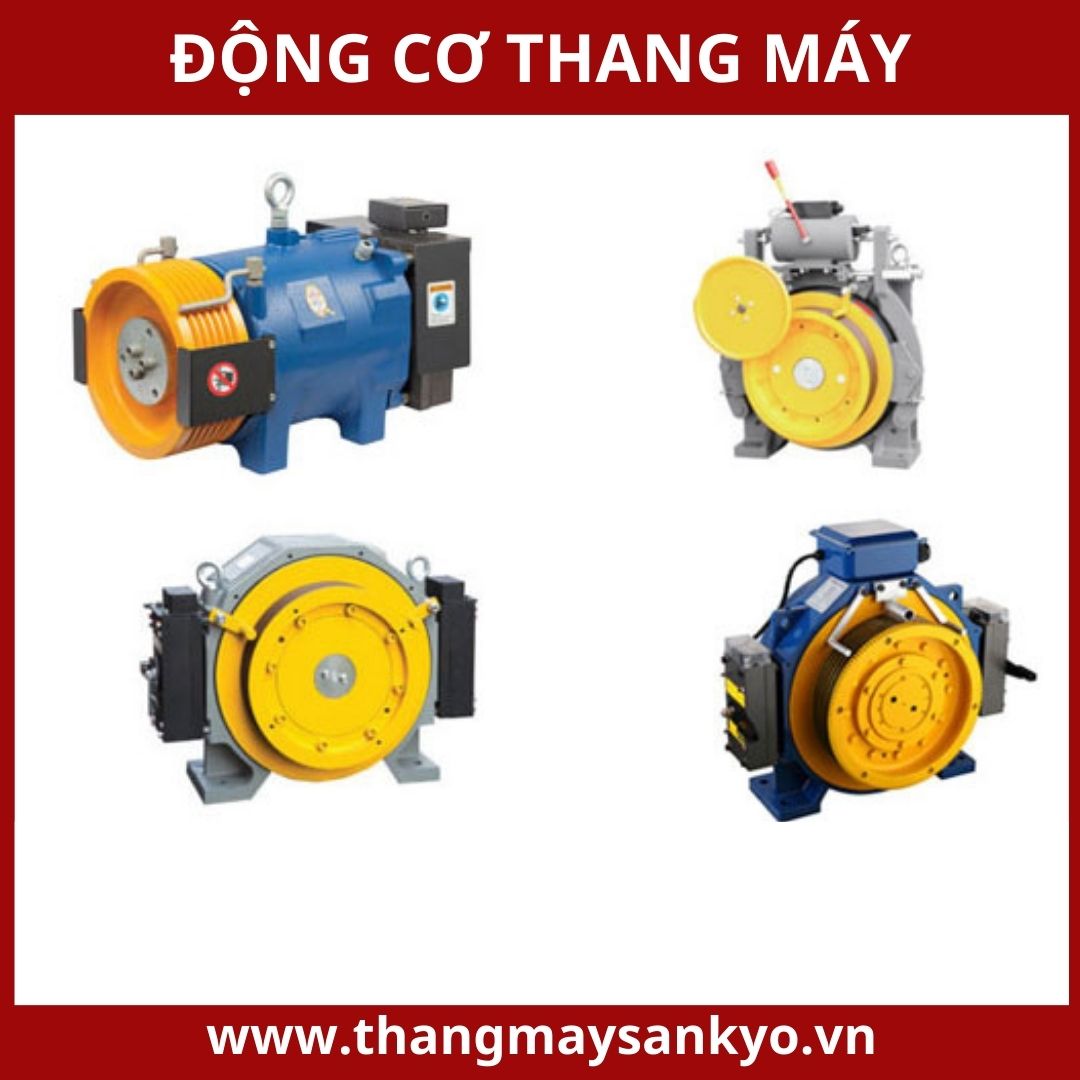
Elevator motor classification
Geared elevator motor
Geared elevator motors are made up of three main components: the motor, the gearbox, and the pulley, which are connected together through a gear system. When the motor is powered, it causes its rotor to rotate, thereby pulling the screw in the gearbox. The gearbox moves from the screw to the gear, which in turn transmits power to the pulley. This pulley system pulls the cable, causing the elevator cabin to move up or down. Geared elevator motors are often preferred for large-scale projects that require high frequency of use, thanks to their ability to provide strong and stable traction.
One of the outstanding features of this type of engine is that it requires a separate engine room area, which is very convenient for installation as well as maintenance and repair later. However, geared engines also have some notable disadvantages. The size of the engine is often large and bulky, making it difficult to clean. In addition, during operation, the engine can produce a lot of grease, increasing friction and heat generation, which can affect the durability and performance of the engine if not properly maintained.
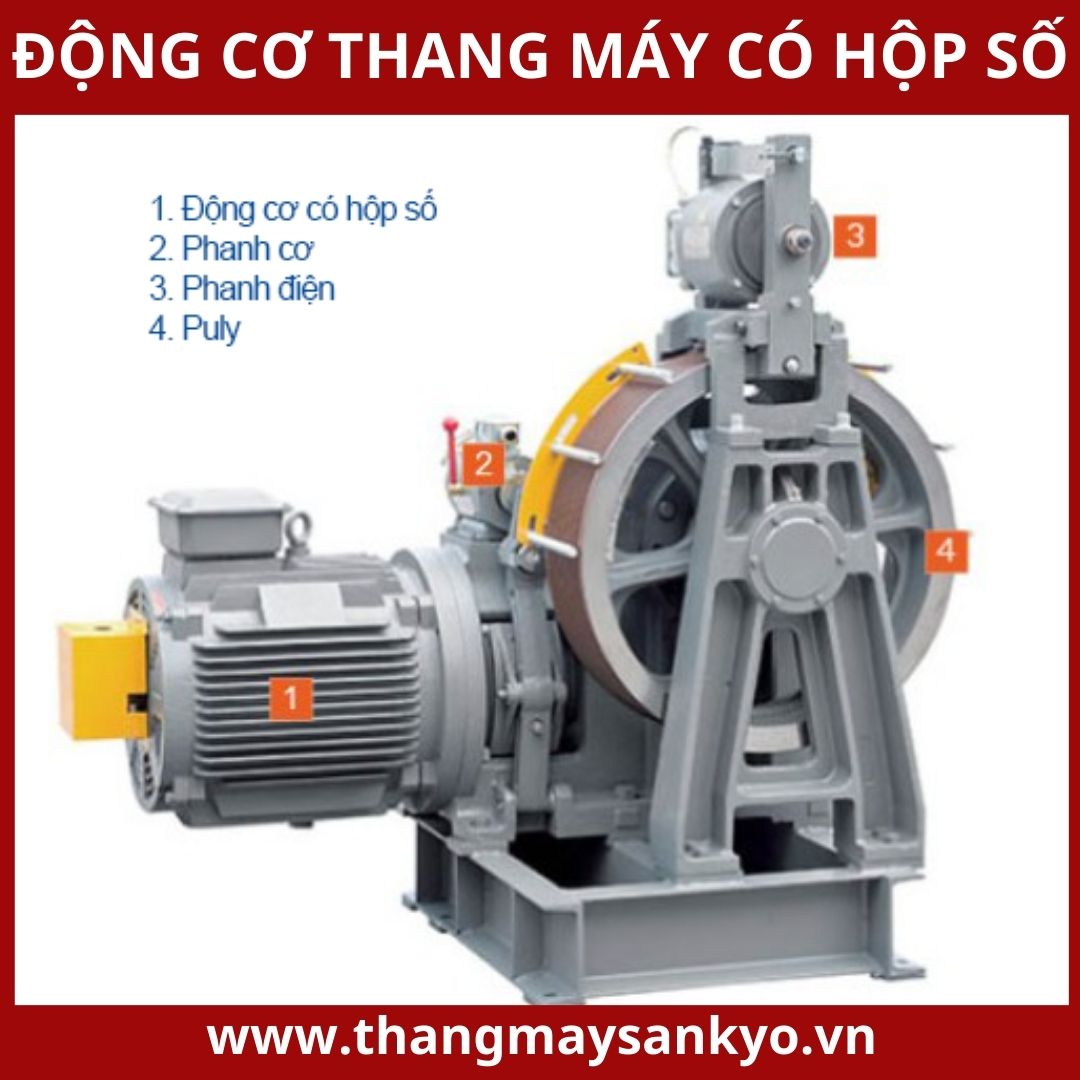
Gearless elevator motor
Gearless elevator motors are an advanced and efficient solution, with a much more compact design than geared elevator motors. This type of motor uses permanent magnets and has a coaxial rotor and pulley structure, allowing it to operate as soon as it is powered. When the motor is activated, it causes the pulley to rotate, which in turn pulls the cable and moves the elevator cabin up or down.
One of the main advantages of gearless motors is energy saving. Compared to geared elevator motors, this type of motor reduces electricity consumption by up to 30%. This not only reduces operating costs but also contributes to environmental protection. Furthermore, gearless motors solve the problems often encountered with geared motors such as the need for lubrication and high noise levels. Thanks to its sophisticated design, gearless motors operate more quietly and cleanly, eliminating the disadvantages associated with friction and lubrication.
Currently, gearless elevator motors have been widely used in many passenger elevator projects, thanks to the benefits of performance and energy saving that it brings. According to statistics, about 80% of elevator motor suppliers on the market today provide both types of motors: geared and gearless traction machines. Therefore, depending on the specific usage needs and the type of elevator to be installed, customers should carefully consider to choose the appropriate elevator brand, ensuring that the traction motor best meets the requirements of performance and cost savings.

Top famous elevator motors on the market
Sicor engine
Sicor is a well-known corporation in the machinery manufacturing industry, especially elevator equipment, with advanced robotic automation technology and Italian manufacturing standards. The company supplies the market with about 45,000 machines each year, standing out for its high technology application and professional working process. Sicor's products meet the market's needs thanks to their outstanding quality and performance.
For Sicor's tractor engine products , the company offers two main types: geared engines and gearless engines.
-
For Sicor engines with gearboxes , specifications include:
- Load capacity: from 250 to 5000 kg
- Speed: 4 m/s
- Gear ratio: 1:1
- Pulley diameter: from 320 to 885 mm
-
For the gearless Sicor motor , the specifications are:
- Load capacity: from 250 to 4000 kg
- Speed: 4 m/s
- Gear ratio: 2:1
- Pulley diameter: from 120 to 670 mm
One of the outstanding advantages of Sicor traction motors is their compact design and space-saving installation. In particular, with gearless motors, installation becomes easier because there is no need to build a separate machine room. This helps to reduce the OH (Overhead Clearance) height, thereby saving space and making elevator operation more efficient.
To check the origin and quality of Sicor motor products, customers can rely on European standards EN 81-20 and EN 81-50. These standards ensure that the products meet the strict safety and quality requirements in the elevator industry, giving customers peace of mind about the reliability and performance of the products.
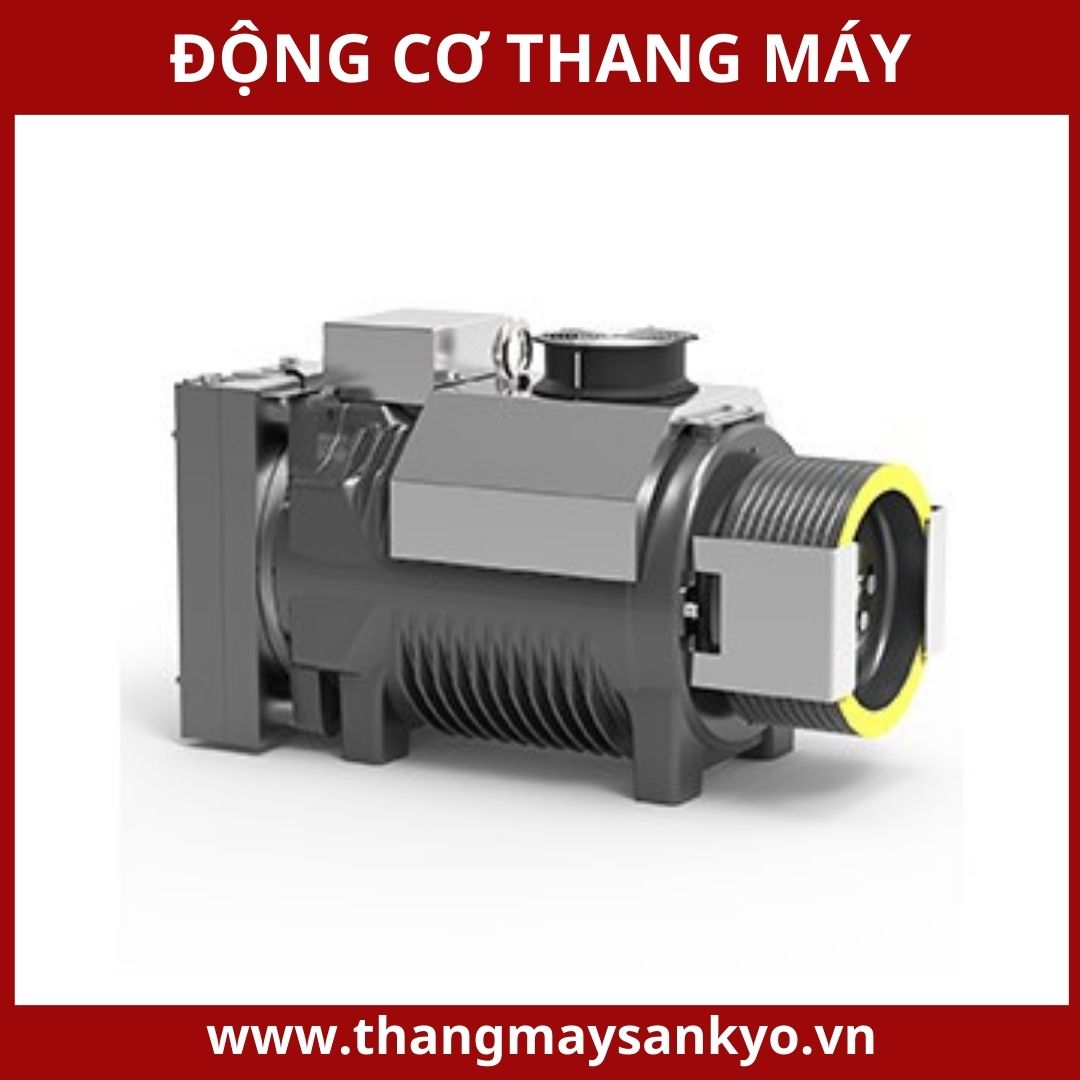
Montanari Engine
Montanari traction motors , made in Italy, stand out with their superior specifications and features, suitable for a wide range of applications in the elevator industry. These motors have a load capacity ranging from 350 kg to 800 kg, with a transmission ratio of 2:1 and pulley diameters ranging from 160 to 320 mm. A notable point is that the pulley components of Montanari elevator motors are designed outside the motor body, which makes installation, maintenance and servicing easier, reducing the time and effort required for these operations.
The outstanding advantage of the Montanari traction motor is its extremely quiet operation. The motor is designed to not produce significant noise, and with the motor's low rotation speed, it helps to minimize vibration even when the machine is operating at high speed. This not only enhances user comfort but also protects other components of the elevator system from premature damage. In addition, the Montanari motor has good heat resistance, which contributes to the longevity of the elevator, making it last longer over time.
To ensure product quality and compliance, customers can test Montanari traction motors against European elevator equipment standards, specifically EN-81-1: 1998 + A3: 2009. These standards confirm that the products meet safety and performance requirements, giving customers peace of mind about the reliability and quality of Montanari motors.

Nippon Engine
Nippon Elevator, from Japan, is one of the first international elevator brands present in Vietnam since 1985. With the continuous development of technology and products, Nippon Elevator has quickly become popular and preferred, especially at the present time.
Nippon traction motors are renowned for their durability and smooth, quiet operation. Designed to handle a wide range of loads from low to high, Nippon motors ensure stable and reliable performance in a variety of elevator applications. It is worth noting that Nippon traction motors are currently being manufactured in joint ventures in many countries such as Malaysia, Thailand, and Korea. Although manufactured in countries other than Japan, these products are still manufactured according to Japanese technology standards, which helps reduce production costs and prices compared to other brands while maintaining high quality.
To ensure product quality, Nippon traction motors are evaluated according to international standards such as EN 81 for elevators and EN 115 for escalators. These standards ensure that the products meet strict requirements for safety, performance, and durability, giving customers peace of mind when choosing Nippon elevators for their projects.
torin engine
Torin elevator motors are manufactured by Torin Drive, one of the leading manufacturers in China in the field of elevator motors and components, air compressors, speed reducers and transmission equipment. Torin Drive, with its rich experience and professionalism, first launched its elevator motor product line in 1985. Since then, the company has continuously expanded and improved its technology, gradually affirming its position as one of the largest and most prestigious elevator motor manufacturers in the world. With its superior product quality and advanced technology, Torin elevator motors have been making significant contributions to the development of the global elevator industry.
PRICE SUCCESSFUL!
PRICE UNSUCCESSFUL!
Hiện chưa có đánh giá nào về sản phẩm này!



